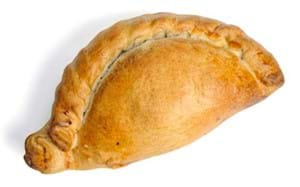The History Of "The Cornish Pasty"

A Slice of Cornwall: The History of the Cornish Pasty
When you think of Cornwall, a few things likely come to mind: rugged coastlines, mining heritage, surfing beaches—and of course, the beloved Cornish pasty. This humble, crimped pastry has become a national treasure, but its roots run deep into Cornwall’s working-class history, with tales of miners, tradition, and practicality baked into every bite.
🥟 What Is a Cornish Pasty?
A traditional Cornish pasty is a hand-held pastry filled with beef, potato, swede (rutabaga), and onion, all encased in a thick shortcrust pastry and sealed with a distinctive crimp on one side. It’s hearty, filling, and perfectly portable—a complete meal wrapped in pastry. You can find the authentic recipe here at Cornish Pasty Association Recipe.
But the pasty is much more than just a regional snack—it’s a symbol of Cornwall, and its history is as rich as its flavour.
⛏️ The Pasty and the Cornish Miners
The pasty’s rise to fame began underground—literally. During the 18th and 19th centuries, Cornwall was a global centre for tin and copper mining. Miners needed a meal that could be taken into the mines, would stay warm for hours, and could be eaten without cutlery. The pasty was the perfect solution.
Its thick pastry crust served a practical purpose: miners would hold the crust with their hands, eat the rest, and discard the crimped edge, which was often dirty or contaminated with mine dust—sometimes even containing traces of arsenic. In this way, the pasty became a portable, hygienic meal in a dangerous and dirty environment.
Some pasties were even made with sweet and savoury halves—meat and veg in one end, jam or fruit in the other—so miners could enjoy both main and dessert in a single package.
📜 Origins and Early Mentions
While the Cornish claim the pasty as their own, similar filled pastries existed elsewhere in the UK as early as the 13th century. Historical records suggest that pasties were once popular among the nobility, even being served at royal banquets. But it was Cornwall that perfected the pasty and made it truly iconic.
By the 17th and 18th centuries, the pasty was firmly established as the food of the working people, especially miners, fishermen, and farm labourers. Its popularity soon spread beyond Cornwall, with Cornish miners carrying their culinary traditions across the globe—to places like South Africa, Mexico, and the U.S.—as they sought work overseas.
🥇 Protected Status: The PGI
In 2011, the Cornish pasty achieved Protected Geographical Indication (PGI) status from the European Union. This means that to be labelled a “Cornish pasty,” it must:
-
Be made in Cornwall
-
Have the traditional D shape, with a crimp on the side (not on top)
-
Contain uncooked filling of beef, potato, onion, and swede, cooked together from raw
-
Be seasoned simply with salt and pepper
This status helps preserve the authenticity and heritage of the pasty, protecting it from imitation and celebrating its unique Cornish identity.
 The Pasty Today
The Pasty Today
Today, pasties are enjoyed by people all over the world, and you’ll find them in bakeries across Cornwall in endless variations—from traditional steak to spicy chicken, cheese and onion, lamb and mint, and even vegan or gluten-free options.
They’ve become a staple at Cornish festivals, village fairs, and family picnics. Some local pasty shops still use secret family recipes passed down through generations, while larger bakeries like Warrens, Rowe’s, and The Cornish Bakery have brought the pasty to the high street.
🏖️ A Must-Try on Your Cornish Visit
No visit to Cornwall is complete without sampling an authentic Cornish pasty, preferably while sitting on a windswept clifftop or sunny beach. It’s a bite of history, culture, and comfort—all in one.
So next time you're in Cornwall, whether you're exploring coastal paths or browsing local markets, make sure to treat yourself to a proper pasty. You won’t just be enjoying a delicious snack—you’ll be taking part in a proud Cornish tradition.
Fun Fact: In Cornish dialect, the word “oggie” (as in “oggy oggy oggy!”) is a nickname for a pasty—just another sign of the affection the region holds for its iconic pastry.
Ready to discover more of Cornwall's charm? Follow along on our blog for local tips, hidden gems, and everything you need for the perfect Cornish getaway.


